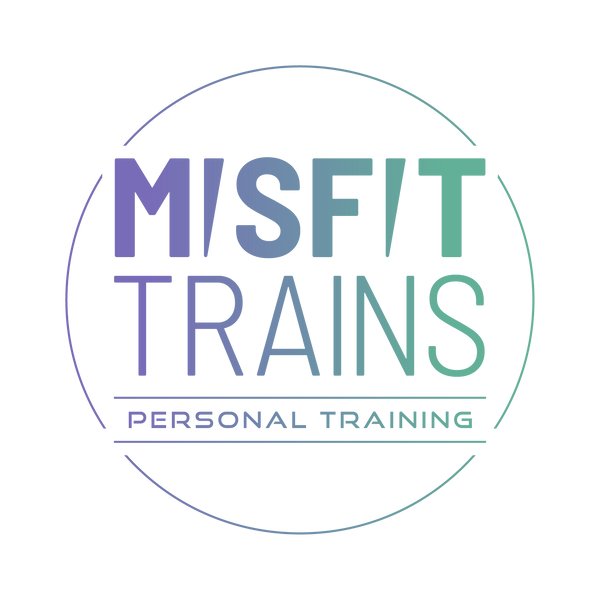
Let's Talk About: Functional Fitness
Share
Functional fitness is a type of exercise that focuses on improving our ability to perform everyday activities. It is designed to help us move better and with ease, by training multiple muscle groups and joints to improve overall strength, balance, and coordination. This type of training can help you perform daily activities with greater ease and reduce the risk of injury.
Real-life strength is not just about being able to lift heavy weights in the gym. It is about being able to carry shopping, climb stairs, get out of bed and perform other daily tasks without strain or discomfort. By incorporating functional fitness into your routine, you can train smarter and live stronger, with a greater ability to handle the physical demands of everyday life.
The Concept of Functional Fitness
The movements in functional fitness mimic real-life activities, such as squatting, lifting, pushing, pulling, and twisting. By training our bodies to move in these ways, we can improve our balance, flexibility, strength, and endurance.
Functional fitness is not just for athletes or fitness enthusiasts. It is for anyone who wants to improve their overall health and well-being. Whether you are a stay-at-home parent, office worker, or retiree, functional fitness can help you perform daily tasks more efficiently and with less risk of injury.
Benefits of Functional Fitness
Functional fitness offers a wide range of benefits for people of all ages and fitness levels. Here are some of the key benefits:
- Improved mobility and flexibility: Functional fitness exercises help to improve our range of motion, making it easier to perform everyday tasks such as reaching, bending, and twisting.
- Increased strength and endurance: By training multiple muscle groups at once, functional fitness helps to improve our overall strength and endurance. This can help us to perform physical activities for longer periods of time.
- Reduced risk of injury: Functional fitness exercises help to improve our balance and coordination, reducing the risk of falls and other injuries.
- Better posture and alignment: Functional fitness exercises can help to improve our posture and alignment, reducing the risk of back pain and other musculoskeletal problems.
- Enhanced sports performance: Functional fitness exercises can help athletes to improve their performance by training the specific movements required for their sport.
Choosing the Right Exercises
Functional fitness exercises should mimic real-life movements to help you build strength for everyday activities. Choose exercises that work multiple muscle groups and incorporate movements that you use in your daily life. Some examples include:
- Squats – helps standing from a seated position
- Lunges – helps balance
- Push-ups – helps overall push strength
- Pull-ups – helps overall pull strength
- Deadlifts – helps lifting from the ground
- Farmers/Suitcase carry – moving and walking with heavy objects
- Overhead Press – control when moving heavy objects above your head
Remember that if some of these exercises are more advanced for your current level they can be modified and the benefits would be the same, and it gives you a mini goal to work towards!
Conclusion
In conclusion, functional fitness is a highly effective and an essential component of overall health and well-being, regardless of age or fitness level. By incorporating functional training into our workout routines and daily lives, our bodies learn to move in ways that mimic real-life activities, so we can improve our balance, endurance, flexibility, strength, power, and agility to help us perform everyday activities with greater ease and efficiency. Whether you are a beginner or an experienced fitness enthusiast, functional fitness can help you achieve your fitness goals and live a healthier, more active life.
Frequently Asked Questions
What are some effective functional exercises for improving real-life strength?
Some effective functional exercises for improving real-life strength include squats, lunges, deadlifts, push-ups, pull-ups, and planks. These exercises use multiple muscle groups and mimic real-life movements, making them great for improving overall strength and mobility.
What are the benefits of a functional training program for beginners?
A functional training program can be beneficial for beginners as it focuses on improving overall strength and mobility, rather than just isolating specific muscle groups. This can help prevent injuries and improve overall fitness levels. Additionally, functional training can be tailored to individual needs and abilities, making it a great option for beginners.
What is the difference between functional training and traditional strength training?
The main difference between functional training and traditional strength training is that functional training focuses on movements that mimic real-life activities, while traditional strength training typically uses isolated exercises that target specific muscle groups. Functional training can improve overall strength and mobility, while traditional strength training can be beneficial for building muscle mass and increasing strength in specific areas.
How can functional training help with weight loss?
Functional training can help with weight loss by increasing overall fitness levels and improving metabolism. Additionally, functional training exercises use multiple muscle groups, which can burn more calories than isolated exercises. However, it is important to note that weight loss is primarily achieved through a combination of diet and exercise, and functional training should be used as part of an overall weight loss plan.
